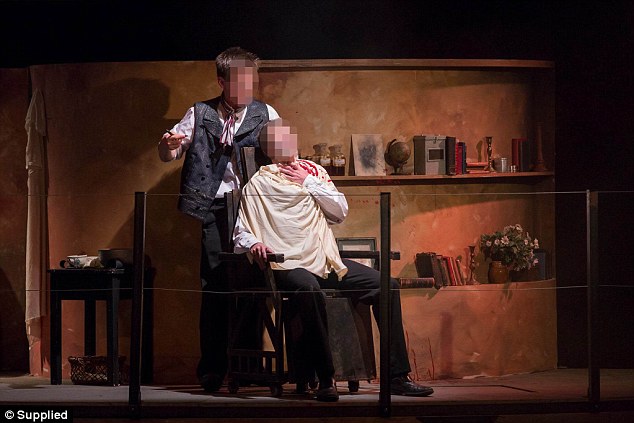This is an excerpt from an article about theatrical safety, originally posted at mystagemag.com. If you are a director, producer, tech director, actor, etc. take a moment to read the whole article at the source. Remember, there is NEVER any excuse for laziness or sloppiness when people’s lives and well being are on the line.
Back to Sweeney Todd — or any show, for that matter — Can we all agree that the safety of our performers and our crew members is paramount? It seems a simple question, but if you heard some of the crew war stories I come across, I can assure you that it isn’t a given. But let’s presume that you’re sane and you’re with me. SAFETY IS NUMBER ONE. And we don’t mean that as a slogan to hang on the wall — we mean it.
I propose to you all the 4 Rules of Theatre Safety – a play on those rules of gun safety. If every theatre, amateur or professional, would obey these four rules, there would never be accidental Sweeney Todd throat-slittings again. Here are your new rules:
- Treat every safety decision as if it is a loaded gun. Because really, it is, right? When you’re thinking about cutting that corner and using a real gun or real knife or real hand grenade, you are treating that “loaded gun” very poorly. Someone is going to get hurt. And if you’re too naive to believe it can happen to you, may I suggest checking out this run-down of people who made the same poor decisions. Don’t let your show be added to this list.
- There is no safe handling of a dangerous object. This may seem like semantics, but there’s a deeper truth. There is only a safer or safest handling of a knife, blank-firing gun, harpoon, flamethrower, hammer, straight razor, teenage girl, etc. “Here, hold this fire — safely.” It’s FIRE. You can handle it as safely as possible, and something could still go wrong (and they do). So keep in mind that no matter what method you undertake, there is still danger in play. Always.
- It’s called an “effect” for a reason. Audiences accept a replica Model T in Ragtime and the use of wires and winches when Peter Pan flies. So why is it that we insist on realism for such dangerous things? Part of the fun of the performance is making something look like something it isn’t. And certainly, that realistic looking cardboard razor could still give a mean paper cut, but better than risking a slice to someone’s jugular vein. It’s called an effect because it looks like the real thing. It should almost never be the real thing.
- Train your team like you care about their safety. Because you do, remember? Insist that your cast and crew members are trained on the proper transport, preparation, storage, handling, and usage of any prop or stage effect that has any possibility of affecting the safety of your cast and crew. If this is above your ability, raise your hand and ask for help. There are plenty of people in your community that can advise safe use of almost anything you can think of — and most will gladly do so upon request. If you’re asking your cast member to take risks, ask yourself if YOU would want to take those risks and respond accordingly until you are certain that you would.
When I read the Sweeney Todd story, the first thing I see is that no one wanted to be accountable for what happened. Lots of excuses were strewn about; excuses like “he only got scraped during rehearsal” and “we wanted it to look real.” Hey Mr. Director — who cares what you want?! You have a company to protect. And they are depending on you to make decisions that are in their best interest.
Remember when your parents asked if Jimmy jumped off a bridge, would you? Well, the reality is that everyone else is already jumping off the bridge. Everyone else is cutting corners — “we haven’t enough time to be safe, or enough money to be safe, or enough knowledge to be safe — and hey, that company or school around the corner did it this way, so surely it’s good enough for us, too!”If we were accountable, we’d realize that the safety of our performers is more than just a catchphrase mentioned to parents after their kids are sent to the hospital. If we were accountable, we’d stop the show when students are injured, not continue bowling along for the sake of a die-hard adage in an educational environment. And certainly, if we were accountable, we’d become even more safe by learning from the issues that others have faced.



